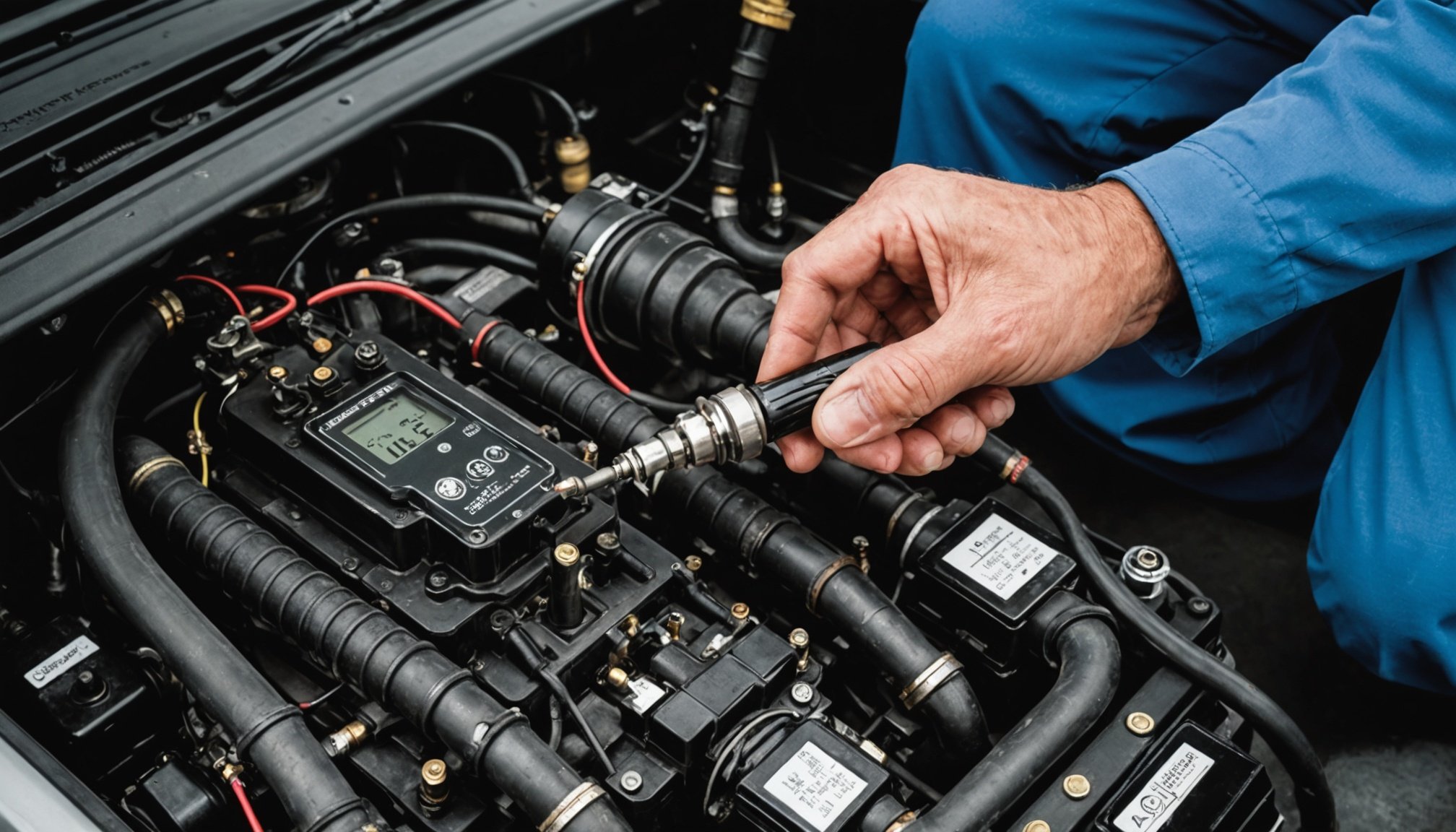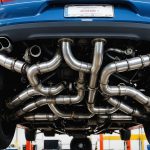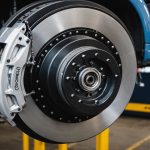Understanding Oxygen Sensors and Their Role
Oxygen sensors are crucial components in vehicle maintenance as they play a pivotal role in monitoring the air-fuel ratio within an engine. These sensors detect the oxygen level in the exhaust gases and relay information to the engine control unit (ECU). This data helps maintain an optimal air-fuel mixture, ensuring efficient combustion, reducing emissions, and enhancing engine performance.
There are different types of oxygen sensors, most notably narrowband and wideband sensors. Narrowband sensors are prevalent in older vehicles, providing a binary indication of whether the engine is running rich or lean. In contrast, wideband sensors offer a broader range of readings, allowing for more precise air-fuel mixture adjustments and better fuel economy.
Also to read : Crucial safety protocols for optimizing alignment of high-performance brake systems
The sensors’ impact on the air-fuel mixture is significant. If they malfunction or degrade, an incorrect mixture can lead to poor fuel efficiency, increased emissions, and even engine damage. Thus, regular maintenance is vital. Cleaning and inspecting the sensors help sustain their functionality and accuracy.
Keeping oxygen sensors in optimal condition involves scheduled checks and timely replacements. This shields the engine from performance pitfalls and safeguards the environment from excessive pollutants. Awareness and attention to these sensors are essential for any responsible vehicle owner.
Also read : Ultimate guide to protecting your vehicle”s rollover safety features
Best Practices for Oxygen Sensor Maintenance
Proper oxygen sensor maintenance is pivotal for sustaining both vehicle performance and environmental health. Regular attention to these sensors can prevent issues that may impair the air-fuel ratio and engine efficiency.
Routine Cleaning and Inspection
Performing periodic cleaning and inspection of oxygen sensors helps preserve their functionality. Detecting early signs of wear or contamination can avert costly repairs. A consistent schedule ensures that sensors perform optimally, reducing emissions.
Tools and Supplies Needed
To maintain oxygen sensors effectively, certain tools are indispensable. Essentials include:
- Socket wrenches, ideal for loosening sensor connections
- Non-corrosive cleaner, to remove deposits without damaging components
- Safety gloves and goggles, for safe handling
Recommended Cleaning Techniques
When cleaning oxygen sensors, opt for techniques that safeguard their delicate surfaces. Gently removing built-up deposits with a non-corrosive cleaner can restore sensor accuracy. It’s crucial to avoid abrasive methods, as they might inflict damage, compromising performance. Ensure thorough drying before reinstallation to prevent moisture interference.
By adhering to these preventive measures, you can extend the lifespan of your oxygen sensors. This not only improves vehicle economy but also minimises environmental harm, reflecting responsible vehicle ownership.
Troubleshooting Common Oxygen Sensor Issues
Identifying and resolving oxygen sensor issues is essential for maintaining optimal vehicle performance. Recognising the signs of a failing oxygen sensor is crucial, as these can significantly impact the engine’s functionality.
Signs of a Failing Oxygen Sensor
Key indicators of oxygen sensor failure include:
- Decreased fuel efficiency
- Rough idling or misfiring
- Increased emissions
When your vehicle exhibits these symptoms, it often points toward a malfunctioning sensor, prompting further investigation.
Diagnostic Methods to Identify Issues
Accurate diagnostics are necessary to pinpoint sensor problems. An on-board diagnostics (OBD) scanner is a valuable tool, providing error codes that help isolate the issue. Cross-referencing these codes with vehicle performance anomalies ensures a precise diagnosis.
How Oxygen Sensor Malfunctions Affect Engine Performance
A malfunctioning oxygen sensor can disrupt the air-fuel ratio, leading to poor combustion and engine performance. This imbalance results in higher fuel consumption and increased emissions. To avoid these pitfalls, regular monitoring and diagnostics are advised for maintaining a well-functioning engine.
By understanding these aspects, vehicle owners can ensure their engine remains efficient and environmentally friendly. Regular attention to oxygen sensors not only optimises performance but also supports a cleaner driving experience.
The Link Between Oxygen Sensors and Engine Performance
Understanding the connection between oxygen sensor health and engine performance is vital for any car owner keen on optimizing fuel efficiency and minimizing emissions. A well-functioning sensor ensures the air-fuel ratio is consistently balanced, boosting the overall efficiency of the vehicle.
Correlation with Fuel Economy
One of the primary benefits of oxygen sensors is their influence on fuel efficiency. By accurately measuring the oxygen level in the exhaust gases, these sensors inform the ECU to adjust the air-fuel mixture precisely. This precision in balancing the mixture translates into optimal fuel economy, helping drivers save money over time.
Environmental Impact and Emissions
Beyond personal savings, oxygen sensors contribute significantly to reducing emissions. When functioning correctly, they ensure complete combustion, significantly diminishing harmful pollutants released into the environment. This is not only beneficial for the planet but also aids in compliance with stringent emission regulations.
Real-World Examples
Consider a car that struggles with uneven performance and high fuel consumption. Upon sensor maintenance, it can regain efficiency, lowering emissions and operating costs. Such scenarios highlight how subtle adjustments and attentive maintenance can lead to marked improvements in engine performance and environmental responsibility.
Replacing Oxygen Sensors: When and How
Understanding the signs that indicate replacement is crucial to maintaining the efficiency of oxygen sensors. Key indicators include persistent check engine lights, significant drops in fuel efficiency, and noticeable emissions increases. These signs suggest that the sensor’s sensing efficiency has degraded, compromising its ability to regulate the air-fuel mix accurately.
Signs That Replacement is Necessary
Signs that an oxygen sensor requires replacement may manifest as:
- Illuminated Check Engine Light
- Diminished Fuel Economy
- Elevated Emissions
If these symptoms persist despite maintenance efforts, replacing the sensor becomes vital to restoring optimal engine function.
Step-by-Step Replacement Process
Proper installation involves a few critical steps:
- Disconnect the battery to ensure safety.
- Locate the faulty sensor. Refer to the vehicle manual for exact placement.
- With the correct tool, unscrew the old sensor.
- Install the new sensor by threading it into place and tightening it.
Post-Replacement Best Practices
After replacing an oxygen sensor, check the vehicle’s diagnostics to ensure clear error codes. Additionally, taking the car for a test drive can ensure that the new sensor is regulating the air-fuel ratio effectively, confirming sensing efficiency and restoring engine performance.











